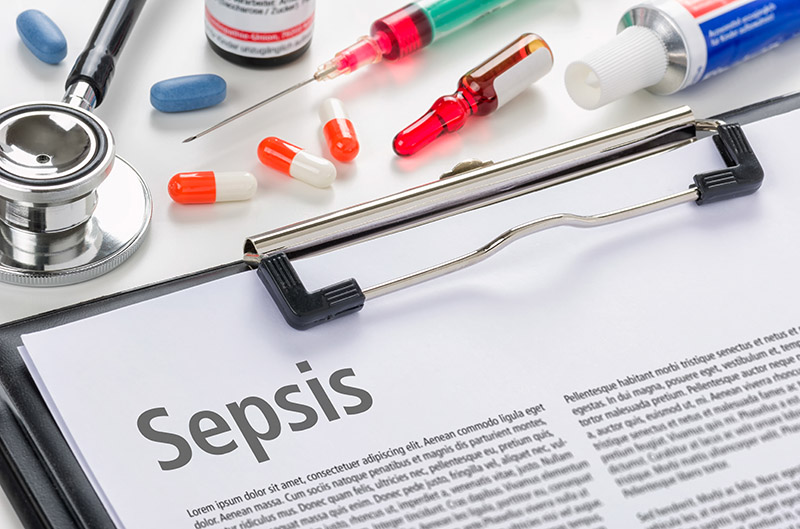
What is Sepsis?
Sepsis is a life-threatening immune response to an infection. Sepsis occurs when an infection somewhere in the body — the skin, lungs, urinary tract, etc. — triggers a strong inflammatory immune response that causes the blood vessels to leak, leading to low blood volume, multiple organ failure, and death.
What Causes Sepsis?
Sepsis is most commonly caused by a bacterial infection. But it can also be caused by a virus, fungus or protozoan infections in the brain, urinary tract, skin and abdominal organs.
The most common causes of sepsis is trauma, surgery, or an invasive procedure such as dental work.
Dentists normally prescribe antibiotics before a dental appointment to decrease the bacteria in the mouth. If the patient is not prescribed antibiotics, the bacteria that normally resides on teeth and in the gums can enter the bloodstream, travel to the heart and colonize the heart valve. The patient usually doesn’t know he is sick with a deadly infection in his heart until months later.
Without quick treatment, sepsis can lead to heart damage, organ failure and death.
Signs and Symptoms
Signs and symptoms include:
Risk Factors
Risk factors include young or old age, or weak immune system caused by diabetes, cancer, trauma, or burns. Sometimes children and the elderly will show no symptoms or the fever is low grade.
Sepsis is a medical emergency. If you think you have sepsis or if you feel sick days after having surgery or an outpatient procedure such as dental work, call your doctor or healthcare provider.
Always ask the doctor of healthcare provider: “Do you think this could lead to sepsis?”
Educate yourself so you know which questions to ask your doctor or healthcare provider.
Use WebMD’s symptoms checker. Remember that most symptoms should fit a familiar pattern so the doctor can properly diagnose you.
This has been your Medical Minute.
More Info On the Web
What is Sepsis? | CDC.gov
Sepsis | Healthline.com
Signs and Symptoms of Sepsis | Mayo Clinic
DISCLAIMER
Any medical information published on this blog is for your general information only and is not intended as a substitute for informed medical advice. You should not take any action before consulting with your personal physician or a health care provider. Sandrarose.com and its affiliates cannot be held liable for any damages incurred by following information found on this blog.





